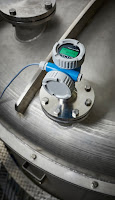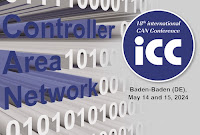Rotork Controls has established a global reputation for robust and reliable valve actuators, operating in some of the world’s most demanding and critical applications. Thorough testing of the motors used in the actuators is one of the keys to this assured performance, with TorqSense transducers from
Sensor Technology playing a vital role in the test process.
Rotork is the world’s leading manufacturer of electric, pneumatic and hydraulic valve actuators and associated control systems, valve gearboxes and valve accessories. The company’s electric valve actuator division offers an electrical solution to industrial valve control and actuation applications of virtually any size, description and complexity.
Its capabilities encompass actuators and control systems for new plants, plant extensions and upgrades, together with life-of-plant support. The division’s unrivalled range of products offers a robust and economic solution for every valve duty and operating environment.
Rotork Controls chief development engineer Geoff Beeho comments: “If you look at something like an oil line, then any failure of the valve actuator could potentially be costing millions of dollars a day. We have to be able to guarantee the performance of the actuators in the most demanding conditions, so testing is vital. TorqSense torque transducers from Sensor Technology are a key element of our test rigs.”
Companies and businesses around the world rely on Rotork actuators, in applications as diverse as power generation, water and sewage, industrial processes, subsea, marine, HVAC, incinerators and cement plants. Common features in many of these applications are challenging environmental conditions, extremes of temperatures, and high costs associated with any downtime. Because of this, absolute reliability of the valve actuators is vital.
The company designs custom actuator designs built around motorised gearboxes, using non-standard open frame motors. “We use a variety of motors depending on the particular application, including DC motors, single-phase motors and three-phase motors, but we don’t rely on off-the-shelf products. Instead, we use open frame motors that we integrate directly into our own systems.
“Performance testing is very important,” he continues. “The duty cycle is atypical – our motors are not in continuous use, only running intermittently and for short period. What is important to us is the short term ratings, and this data isn’t always readily available. We have to have performance data that will tell us exactly what we need to know about the motors in these most demanding applications.”
They designed their own rig to test the motors, with Sensor Technology TorqSense transducers at its heart. “We needed non-contact torque sensors in the rig. The early design used magnetically coupled torque sensors but we were never completely happy with these. So when we upgraded the rig to be able to perform a wider range of tests, we took the opportunity to look around the market and we found the TorqSense transducers.”
“The TorqSense transducers immediately struck us as being a much more robust solution, better suited to handling the torques we were subjecting them to,” comments Beeho.
The common practices of over-specifying a motor that guarantee reliable operation in standard applications simply don’t apply in valve actuation. “Motor sizing is critical,” he continues. “If we put in a motor that is too big, then we can risk damaging the valve. We can use motors that appear to be under-rated, but because our duty-cycle is so short we can get better performance from the motor. But the performance data to support this sort of motor use isn’t always available, or isn’t always reliable, so we need to perform our own tests. We also need to know how our motors will handle extremes of temperature in given applications so that reliability is never compromised. The TorqSense transducers allow us to make all the required tests.”
An advantage of the TorqSense transducers in the Rotork test rig is that they provide both analogue and digital outputs. “This has proved to be a real bonus,” says Beeho. “Not only can we use one output to check the calibration of the other, but it also means we have the flexibility to use both outputs performing different tests. For example, we might use the analogue output to feed torque and speed data into the power analyser during a performance test, and then use the digital output for a temperature test. Here, we run the motor for 15 minutes at constant torque and see how hot it gets. The output from the TorqSense transducer allows us to close the loop so that we can keep the torque constant.”
In any application, the fundamental considerations are the actuator’s ability to overcome the resistive forces of the valve, and the dynamic performance requirements to enable the valve to adequately meet the process demands. With its comprehensive testing procedures built around the TorqSense transducers, Rotork Controls has the confidence that its electrically operated valve actuators will always meet the application requirements.
@sensortech @rotork #PAuto #TandM












































